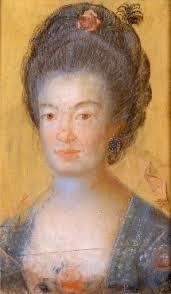Name Elisabeth von | ||
Elisabeth Christina von Linné (1743–1782), was a Swedish botanist, daughter of Carl von Linné and Sara Elisabeth Moræa.

Linné is referred to as the first female botanist in Sweden in a modern sense, despite not having received any formal education. It was she who first described the optic phenomenon in which the Tropaeolum majus appears to send out small bursts of lightning, now named the Elizabeth Linnæus Phenomenon (or, in German, Das Elisabeth-Linné-Phänomen) after her.
She published her observations on the topic in a paper for the Royal Swedish Academy of Sciences in 1762, aged 19. This paper came to the notice of the English doctor, scientist and poet, Erasmus Darwin. He included a reference to it in his ″The botanic garden, part II, containing the loves of the plants″ (1789) in which he also reported a confirmation of the phenomenon by M.Haggren, a Lecturer in Natural History who had published his findings in Paris in 1788.
The poets William Wordsworth and Samuel Taylor Coleridge read Darwin’s accounts early in their careers and, influenced by these accounts, they referred to flashing flowers in their poems, Wordsworth in ″I wandered lonely as a cloud″ also called "Daffodils" (′They flash upon that inward eye′) and Coleridge in his ″Lines Written At Shurton Bars …″ (′Flashes the golden-coloured flower / A fair electric flame′). Thus Elizabeth Linnaeus came, through Darwin, to influence the pioneers of English Romantic poetry.
Linné was married and had two children.
